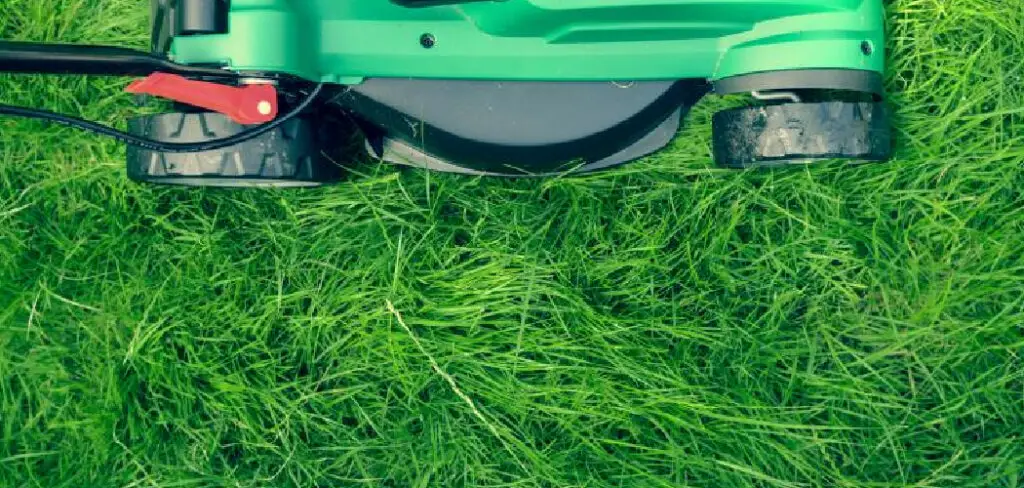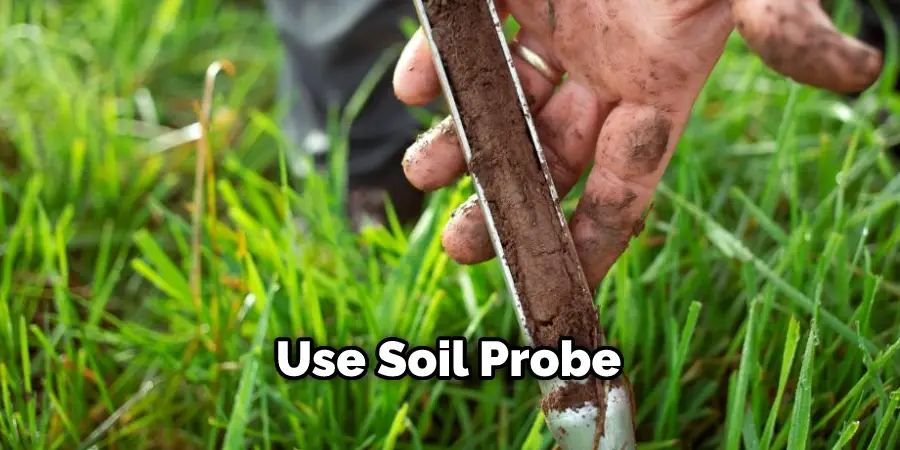Are you starting a lawn from scratch and wondering how to take care of your new grass? Growing and maintaining grass can be difficult, especially if you’re just getting started. But don’t worry – with a few tips and some ongoing maintenance; you’ll have gorgeous green grass in no time!
In this blog post, we’ll cover the basics of how to take care of new grass, from properly preparing the soil before planting to proper irrigation methods after sowing. Read on to learn more about how to get your lawn looking luscious!

How Long Before You Can Walk on New Turf?
The amount of time it takes before you are able to walk on your new turf will depend on the type of grass you choose and the weather conditions. In general, cool-season grasses such as Kentucky bluegrass or tall fescue need four to six weeks before they can be walked upon. Warm-season grasses such as Bermuda or Zoysia need two to four weeks before they can be walked upon.
It is best to wait until the grass has had a chance to fully root itself into the soil and establish its system of roots for optimal health. Walking on it too early can damage the turf and cause it to become matted down, leading to weak growth and poor health. In addition, if the turf is walked on too soon, it may be prone to weeds and diseases due to its lack of a root system.
To ensure your turf has enough time to establish itself before being walked upon, wait until it is at least three inches tall or higher. Additionally, wait for a period of warm and dry weather to allow the turf to root itself and its roots to establish before walking on it. Remember, it is important to take extra care when caring for your new turf so that you can get the most out of it!
By following these guidelines, you can ensure that your new turf will stay healthy and vibrant for many years to come. Taking the time to properly care for your new grass will be worth it in the end! Good luck, and enjoy your new turf.
This article has been prepared as general information only and is not intended to be relied upon as medical, legal, financial, or other professional advice. Please consult a professional for specific advice. We do not accept any responsibility for any loss which may arise from reliance on the information contained in this article.
9 Methods on How to Take Care of New Grass
1. Water Regularly
One of the most important things you can do to take care of your new grass is to water it regularly. Depending on the type of grass you have, you will need to water it anywhere from once a day to once a week. Be sure to check the soil before watering to make sure it is not already saturated.
If the soil feels moist, you don’t need to water it yet. While the grass is still young, you should water it deeply and less frequently to encourage deeper root growth. However, always be mindful of the weather and water more often if it’s hot or dry.
2. Mow Properly
Another important thing to do if you want to take care of your new grass is to mow it properly. You should never mow more than one-third of the height of the grass at one time. Additionally, be sure to use a sharp blade on your lawnmower to avoid damaging the grass.
Furthermore, ensure you switch up the direction of mowing every time. This helps to prevent ruts from appearing on your lawn. Finally, don’t forget to collect the grass clippings. If you leave them behind, they can smother your new grass and cause it to die.
3. Fertilize
Fertilizing your new grass can also help it to stay healthy and thrive. Be sure to use a fertilizer that is specifically designed for new grass, and follow the directions on the package carefully. Over-fertilizing can actually damage your grass, so it is important to be careful.

Additionally, be aware that too much nitrogen can also cause your grass to produce weak roots, so you should use a balanced fertilizer when possible. For best results, fertilize your new grass in the spring and again in the summer. This will help promote healthy growth and help it to stay lush throughout the growing season.
4. Aerate
Aerating your lawn can also help new grass grow strong and healthy roots. Aeration involves making small holes in the soil so that air, water, and nutrients can reach the roots of the grass more easily. You can aerate your lawn yourself with a hand aerator or hire a professional to do it for you.
Aerating a lawn can reduce soil compaction, improve drainage and help grassroots access direct air, water, and nutrients. Once your lawn is aerated, spread a thin layer of compost over the grass to help it grow and develop strong roots. With the right care, your new grass will have a better chance of thriving on your lawn.
5. Reseed Bare Spots
If you notice any bare spots in your lawn, be sure to reseed them as soon as possible. Bare spots are often caused by things like pet urine or heavy foot traffic. To reseed a bare spot, simply remove any dead grass and loosen the soil with a rake before spreading the seed over the area and lightly covering it with soil.

Water regularly until the seeds have germinated and new grass has begun to grow. If the bare spot is large, you may need to use a spreader to ensure that the seed is evenly distributed. You should also consider soil testing and fertilizing the area if necessary. With a little bit of extra care, newly seeded areas will blend in with the rest of your lawn seamlessly.
6. Control Weeds
Weeds can quickly take over a lawn if they are not controlled. Be sure to pull up any weeds by hand as soon as you see them growing. You can also use herbicides that are specifically designed to kill weeds without harming grass. Be sure to follow the directions on the herbicide carefully.
Additionally, you can cover problem areas with a layer of mulch or bark chips to help prevent weed growth. However, these can be difficult to remove once they are established. Once the new grass is established, be sure to mow regularly and avoid too-frequent fertilizer applications. This will help keep weeds at bay.
7. Overseed
Overseeding your lawn will help it to become thicker and more resilient. When overseeding, be sure to use a grass seed that is appropriate for your climate and spread it evenly over the lawn. Water the seeded area regularly until the new grass has germinated and begun to grow.
Once your new grass is established, you can reduce the water frequency as needed. Make sure to fertilize your new grass to provide the nutrients it needs to thrive. Be sure to follow the directions on the fertilizer packaging for the best results.
8. Use Mulch

Mulching your lawn will help protect new grass from extreme weather conditions and pests. Be sure to use an organic mulch, such as wood chips or straw, and apply it evenly over the surface of the lawn.
Avoid using chemical pesticides or herbicides in mulched areas, as they can damage new grassroots. For additional protection, consider using a pre-emergent herbicide before applying the mulch to keep weeds from sprouting.
9. Control Weeds
Weeds can compete with new grass for water and nutrients, so it is important to control them early on. The best way to control weeds is to pull them by hand or use a hoe or trowel to dig them up from the root system. You can also use an organic herbicide if necessary.
Make sure to follow the instructions on the herbicide carefully and use it sparingly. If you have persistent weeds, consider laying down a mulch or landscape fabric to keep them from coming back.
Can You Water New Grass Too Much?
Yes, it is possible to water new grass too much. Doing so can cause the soil to become oversaturated and compacted, in turn preventing proper water drainage. It is also possible for the new grass seedlings to rot in overly wet soil, leading to failed growth and dead patches in your lawn.
Therefore, it is important to keep an eye on your lawn’s moisture level when watering new grass. Only water if the top 1-2 inches of soil feels dry. If you are unsure, use a soil probe to check the water content of your lawn.
This will help ensure that your grass is receiving an adequate amount of moisture and no more than necessary. Overwatering can also lead to an excess of weeds, as they thrive in wetter conditions, while new grass has difficulty growing under these circumstances.

Conclusion
New grass needs extra care to ensure a long, healthy life. Be sure to start with a high-quality seed, and use the right amount of fertilizer and water regularly but carefully.
With proper attention, your new lawn will soon be the envy of the neighborhood. We hope this guide on how to take care of new grass was helpful. Please share it with your friends on social media if you find it useful. And be sure to check back here soon for more informative guides like this one.
You can check it out to Find Cool Rocks in Your Backyard


